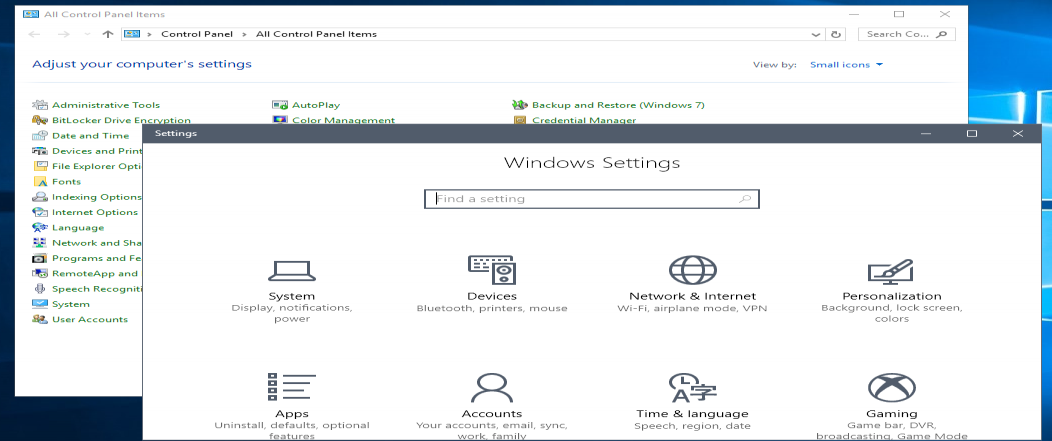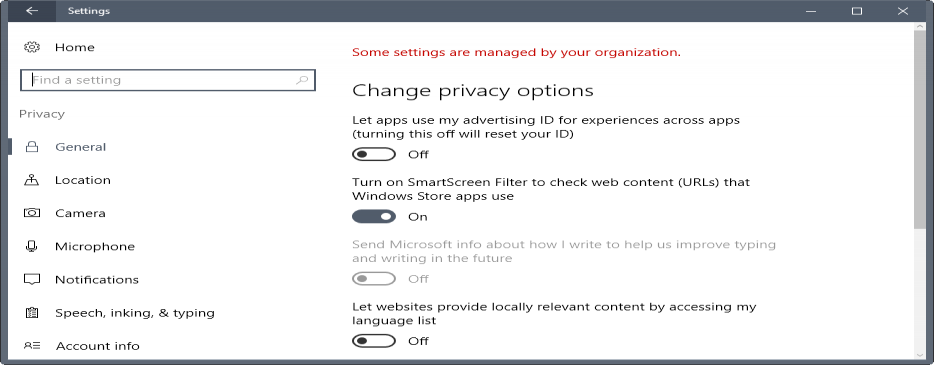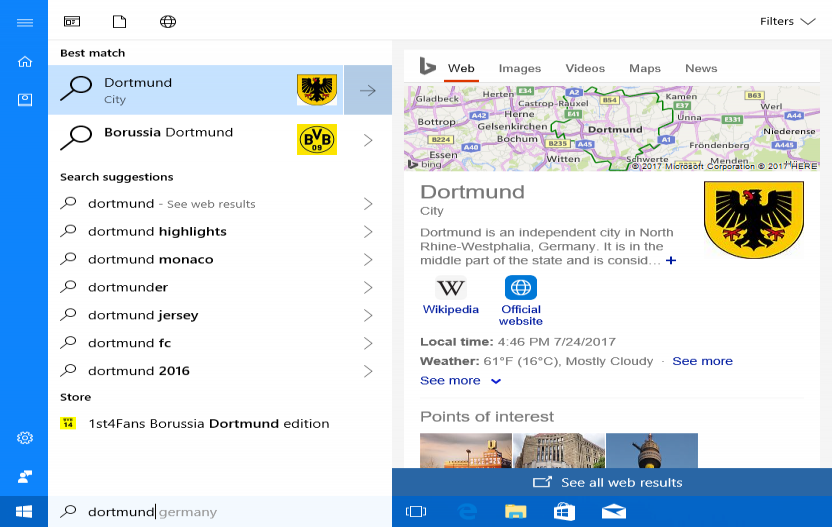8 things Microsoft needs to fix in Windows 10
Windows 10 was released in 2015 with much fanfare as the next and last version of the Windows operating system.
While Windows 10 was designed for the ground up to work on any device type, its interface was flexible enough to provide desktop users with a different experience than users on mobile devices (the few that were supported).
Microsoft got away from the Windows 8 experiment of pushing a unified mobile and touch optimized interface to the Windows population -- which backfired for the most part as the majority of Windows users used neither -- and introduced new programs and features on top of that.
Two years in, it is time that Microsoft addresses some of the issues of the operating system that are still an issue today.
1. Control Panel vs. Settings app

Windows 10 shipped with two management interfaces. The classic control panel and the new Settings application. It was clear back in 2015 that Microsoft did not have enough time to move the bulk of control panel applets to the Settings application. The company announced back then however that the control panel would go eventually.
The situation has not changed all that much in 2017. The latest version of Windows 10 ships with the same two interfaces as in 2015. Some options were removed from the control panel and added to the Settings application for the most part, but fact is that users and administrators still have to juggle between the two management interfaces to get things done.
The main issue I have with this is that Microsoft moves individual options gradually to the Settings application. Each feature update introduces some changes only. It is unclear why Microsoft is not putting more resources behind the migration as it would simplify administration a lot (provided that the company brings all options to the Settings application).
2. Microsoft Edge

The default system browser on Windows 10 is Microsoft Edge. It is a bare bones browser designed with simplicity and mind. That's a refreshing change when compared to Internet Explorer, which is quite heavy, but not enough when compared to third-party browsers such as Firefox or Chrome.
Microsoft Edge lacks customization options, preferences and extensions support. Extension support was added with the Anniversary Update in 2016, but up until today, only a few dozen extensions have been released for Microsoft Edge.
Where is the much awaited option to install Chrome extensions? Why is not Microsoft pushing this more by contacting developers of popular extensions to give them incentives to port their extensions to the web browser?
Our Microsoft Edge annoyances list lists additional issues with the browser.
3. Privacy

Privacy has been a hot topic ever since Windows 10 was revealed in public beta builds. Microsoft's shift to "Windows as a Service" made Telemetry gathering more important for a number of reasons, for instance because of the shortened release cycle.
The company did a bad job at communicating with its user base about that. It revealed what the different Telemetry levels collect only with the release of the Creators Update, and left users mostly in the dark before that.
If you add other privacy concerns to that, the increase in "suggestions" that Microsoft displays in various locations of the system, and the massive privacy section and whitelisting of some apps, you end up with a system that is too invasive for privacy conscious users.
Some concern may be blown out of proportions, but Microsoft needs to work on its communication skills and improve privacy on Windows 10 further.
4. User Control

Windows 10 is not as bad as some other operating systems when it comes to giving users control over it, but Microsoft locked some features and options as well.
To give you some examples:
- Web Search works only with Bing and Microsoft Edge.
- You cannot disable Telemetry, only set it to Basic (or Security if you run Enterprise, Education editions).
- Many system applications cannot be uninstalled (using the interface).
- Windows Updates are all-or-nothing thanks to the cumulative nature of the update packages.
Experienced Windows users want to be in control when it comes to the operating system.
5. The default applications

Windows 10 ships with a set of default applications. While some of these are certainly useful to some users of the operating system, there are others such as 3D Builder that are likely not used by many.
Controls to uninstall or move system apps are lacking in many regards, and it seems to change significantly between different versions what users can and cannot do.
While it is possible to uninstall system apps using PowerShell, most users are probably not comfortable using it.
The Settings application lists these apps, but the option to uninstall these apps is grayed out for many. Move is listed as an option, but it is grayed out for all system apps.
Microsoft needs to understand that part of the userbase does not want to use these apps. Desktop programs are often better, for instance when it comes to functionality.
6. Windows Store

The Windows application ecosystem is way better than it was back when Windows 8 was released. Store apps don't look alike anymore, and the number of applications that users can select from has risen significantly as well.
Windows Store itself is quite the mess though, as it is a universal store now that delivers apps, games, media and even Microsoft Edge extensions to the Windows population.
The selection of apps and games is inferior when compared to Google's and Apple's store, and it is pretty much the same uphill battle that Microsoft faces with Edge and extensions support.
The porting of Win32 programs to Store apps may be useful in some cases, but there is little incentive for desktop users to pick the Store application if a desktop program is also available. This is different for the upcoming Windows 10 S edition though as it won't run legacy programs.
Another thing that keeps Windows Store behind is Microsoft's own strategy of releasing apps for Android or iOS exclusively or first.
7. Windows 10 Mobile
Is Windows 10 Mobile still a thing? Microsoft seems to have removed itself from mobile more or less. While there are a handful of devices that run Windows 10 Mobile, they are negligible when compared to Android and iOS.
The mobile strategy has failed for Microsoft big time, and the company has lost most of its die hard mobile users in the process.
Is Windows 10 Mobile dead, or will Microsoft attempt a revival? The rumored Surface Phone could be Microsoft's last attempt at reviving the mobile operating systems.
Microsoft should communicate better when it comes to its mobile strategy.
8. The focus

Windows 10 development as of late seems to focus on features that the majority of users don't seem to want or need.
The last feature update was the Windows 10 Creators Update, and it introduced new apps and options to create things. While that is certainly attractive to a subset of users, I'd imagine that the bulk of users cannot or won't use any of these new features apart from maybe giving them a try once to see what the hype is all about.
To be fair, the Creators Update did ship with other improvements, but Microsoft seems to have put the focus on creation more than anything else. This continues with the release of the Windows 10 Fall Creators Update later this year.
Now You: Did I miss something? Feel free to discuss in the comment section below
This article was first seen on ComTek's "TekBits" Technology News

- Log in to post comments